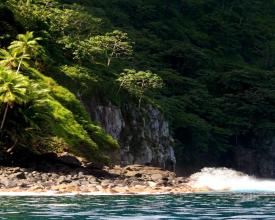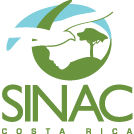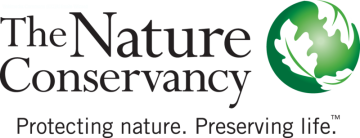
A conservation model for Costa Rica

Costa Rica faces enormous challenges in ensuring the sustainability of conservation endeavours. A shortage of sustainable finance continue to exert pressure on protected areas. To ensure the long-term funding of conservation, SINAC, together with its partners, created the public-private conservation initiative Forever Costa Rica. This non-profit association aims to complement state and private efforts to preserve biodiversity e.g. through the implementation of management plans for fourteen MPAs.
Context
Challenges addressed
The primary challenges in the management of MPAs in Costa Rica are:
- Conservation of primary marine and coastal ecosystems
- Lack of planning instruments for good governing
- Missing of systematic monitoring of indicators for ecological integrity
- Weak system of surveillance and enforcement
The solution concentrates on financing improving activities in a sustainable way.
Location
Process
Summary of the process
to be added
Building Blocks
Implementation and Monitoring Plan
Besides setting conservation goals, the Implementation and Monitoring Plan also details strategic objectives and activities to be implemented over a set period of time in order to achieve these goals. Furthermore, the plan identifies potential risks and difficulties and provides indicators for monitoring and evaluation.
Enabling factors
- Defined targets according to CBD
- Annual activities of the Monitoring Plan included in the Operating Working Plan of SINAC, the annual acquisition plan of the trusteeship and in the working plans of bilaterally cooperating projects that contributed in the first four years
- Budgeted activities according to the existence of a trusteeship
- Application for regulated goods and services from SINAC to ACRXS for a cooperation agreement and a manual of operations
Lesson learned
Using clearly defined targets, a detailed plan to meet them and a budget allowing this:
- divided revenues from the trusts,
- an efficient and organized implementation,
- a guarantee to meet the targets mentioned.
Public-Private Partnership
A cooperation agreement defines the roles and responsibilities of each partner in the public-private partnership and guarantees the enforcement of a timed Implementation and Monitoring Plan to achieve the conservation goals.
Enabling factors
- Formalisation of a public-private partnership
- Roles and responsibilities clearly defined for every member
- Institutionalization mechanism in SINAC to execute the annual actions of the Execution and Monitoring plan
- Definition of clear processes to apply for implementation financing
- Establishing of report and fulfilment mechanisms
Lesson learned
Using a clearly defined planning objective for the public-private partnership and formalized and pre-established implementation regulations and processes, contributes to the relationship between the members and to achieve progress in the implementation of the working plan, jointly in an efficient and transparent way.
Trust Fund
A trust fund provides a long-term funding source to finance activities defined in the Implementation and Monitoring Plan. The trust is founded on perpetuity, independence, simplicity, flexibility and transparency. The founding partners serve as trustors, while the beneficiary is the country’s national protected areas.
Enabling factors
- Public and private partners make compromises in revenues to ensure that all the actions planned are matching for five years with 100% of the funds required, including recurring revenues
- Independent, simple and flexible trusteeship with clearly defined reporting and transparency mechanism - Costs of the activities of the Execution and Monitoring Plan 2010 – 2015 represent the basis for the financial scenarios to determine the trusteeship’s amount and the basic outlines of its investment policy
- Government committed through budget compensation
Lesson learned
The time invested in an initial stage of designing the three pillars (Execution Plan, Agreement and Trusteeship) was crucial to generate a technically applicable proposal on the financing necessary for the marine protected areas, to define a revenue target that is able to reach the conservation goals and to maintain them by establishing financial scenarios that allow to sustain investments and conservation targets for a long time.
Impacts
- Annual recurring revenue of the trusteeship Costa Rica por Siempre of $40,000 for prioritized MPA (16 MPA) through implemented management plans (systems of surveillance and enforcement, measures of climate change adaption, among other things)
- Elaboration of properly financed management plans that foster concrete actions to reduce pressures on marine biodiversity. For example: increase surveillance and enforcement in the MPAs, promotion of best practices of production in zones of influence (drainage area), development of regulations for the use of marine resources in protected areas.
- Strengthening dialogue, negotiation and leadership capacities through multi-sectoral platforms to develop strategies that enable sustainability in the use of marine and coastal resources in places that are important for biodiversity conservation
- Empowerment of key players in marine resources conservation by active and effective participation (following a methodology and a regulative framing) in the strategic planning (management plans) of the marine protected areas and in the formation of alliances with the park administration
Beneficiaries
- marine protected areas of Costa Rica
- national system of areas of conservation (SINAC)
- ministry for the environment and energy (MINAE)
- coastal communities
- civil society





